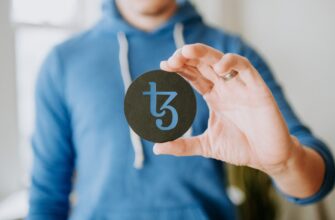What is Cryptocurrency and How Does Blockchain Work?
Cryptocurrency blockchain represents a revolutionary fusion of digital currency and decentralized technology. At its core, cryptocurrency is digital money secured by cryptography, operating independently of central banks. Blockchain serves as its foundational technology—a distributed, immutable ledger recording all transactions across a peer-to-peer network. When you send Bitcoin or Ethereum, miners verify the transaction through complex computations, grouping it into a “block” that links cryptographically to prior blocks. This creates a transparent, tamper-proof chain visible to all network participants, eliminating the need for intermediaries like banks.
Key Features of Cryptocurrency Blockchain Technology
The power of cryptocurrency blockchain lies in these transformative attributes:
- Decentralization: No single entity controls the network, reducing systemic risks and censorship.
- Transparency: All transactions are publicly verifiable on the blockchain while maintaining user pseudonymity.
- Security: Cryptographic hashing and consensus mechanisms (like Proof-of-Work or Proof-of-Stake) prevent fraud and double-spending.
- Immutability: Once recorded, data cannot be altered retroactively, ensuring audit integrity.
- Programmability: Smart contracts automate agreements (e.g., Ethereum) without third parties.
Popular Cryptocurrencies and Their Blockchain Use Cases
Beyond Bitcoin’s pioneer status, diverse cryptocurrencies leverage blockchain for specialized applications:
- Bitcoin (BTC): Primarily a decentralized store of value and payment system.
- Ethereum (ETH): Hosts dApps (decentralized apps) and smart contracts for DeFi, NFTs, and DAOs.
- Ripple (XRP): Facilitates instant cross-border payments for financial institutions.
- Litecoin (LTC): Offers faster transactions than Bitcoin for everyday purchases.
- Cardano (ADA): Focuses on sustainability and academic research for scalable solutions.
Blockchain applications extend beyond finance—supply chain tracking (VeChain), healthcare data management, and voting systems demonstrate its versatility.
The Future of Cryptocurrency Blockchain: Trends and Predictions
As adoption accelerates, key developments are shaping the cryptocurrency blockchain landscape:
- Institutional Investment: Major firms like BlackRock and Fidelity now offer crypto ETFs, boosting market legitimacy.
- Regulatory Evolution: Governments worldwide are developing frameworks (e.g., EU’s MiCA) to protect users while fostering innovation.
- Layer-2 Solutions: Technologies like Lightning Network (Bitcoin) and Polygon (Ethereum) enhance scalability and reduce fees.
- CBDCs: Central Bank Digital Currencies (e.g., China’s digital yuan) may integrate blockchain for national currencies.
- Web3 Integration: Blockchain underpins the decentralized internet, empowering user data ownership.
Experts project the global blockchain market will exceed $1,400 billion by 2030, driven by enterprise adoption in finance, logistics, and identity management.
Frequently Asked Questions (FAQ)
Q: Is cryptocurrency blockchain safe for everyday transactions?
A: While blockchain technology itself is highly secure, risks exist in exchanges and wallets. Use reputable platforms, enable 2FA, and store assets in hardware wallets for maximum safety.
Q: How does blockchain differ from traditional databases?
A: Traditional databases are centralized and controlled by administrators. Blockchain distributes data across thousands of nodes, making it resistant to single-point failures and unauthorized changes.
Q: Can blockchain exist without cryptocurrency?
A: Yes. Enterprise blockchains like Hyperledger operate without native tokens for supply chain or data verification. However, public networks often use tokens to incentivize participation.
Q: What’s the environmental impact of cryptocurrency mining?
A> Proof-of-Work blockchains (e.g., Bitcoin) consume significant energy. The industry is shifting toward eco-friendly alternatives like Proof-of-Stake (used by Ethereum since 2022), reducing energy use by ~99%.








